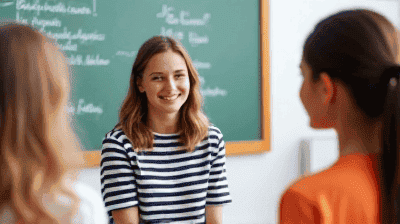
In recent years, mindfulness has gained recognition as a powerful practice that can significantly enhance educational experiences for students across various backgrounds. For students in special education, mindfulness offers a unique set of benefits that can support emotional regulation, social skills, academic performance, and overall well-being. This article delves into the concept of mindfulness, explores its benefits for students with special needs, and provides practical strategies for educators and families to incorporate mindfulness practices into their daily routines.
Mindfulness is the practice of being fully present and engaged in the moment, allowing individuals to observe their thoughts, feelings, and sensations without judgment. Rooted in ancient traditions, mindfulness practices have become increasingly popular in modern psychology and education. Mindfulness involves techniques such as mindful breathing, meditation, body scans, and mindful movement. Through these techniques, individuals can cultivate awareness of their internal experiences and external environment.
Numerous studies suggest that mindfulness practices can positively impact mental health and cognitive functioning. Research indicates that engaging in mindfulness can lead to improvements in emotional regulation, attention span, and stress reduction. These benefits are particularly relevant for students in special education, as they often experience challenges related to emotional and behavioral regulation.

One of the primary benefits of mindfulness for students in special education is its ability to enhance emotional regulation. Many students with special needs struggle with managing intense emotions, leading to challenging behaviors. Mindfulness practices help students recognize and understand their emotions, allowing them to respond more effectively to emotional triggers.
Mindfulness practices are known to improve attention and focus by training the brain to sustain concentration. Many students in special education face challenges related to attention deficits, which can hinder their academic success. Mindfulness helps counteract these challenges in several ways:
Students with special needs often experience heightened levels of stress and anxiety, which can impact their academic and social experiences. Mindfulness equips students with tools to manage stress effectively:
Mindfulness practices can positively influence social skills development, an area that often poses challenges for students in special education:
Regular mindfulness practice encourages a positive self-image and higher self-confidence among students in special education:
Incorporating mindfulness practices into special education requires intentionality, adaptability, and creativity. Here are several strategies that educators and families can use to promote mindfulness effectively:
Creating a regular mindfulness routine can help students become comfortable with the practice. Consider implementing mindfulness sessions at specific times during the day, such as:
Guided meditations can provide structure and support for students new to mindfulness practices. Many resources are available, including apps, videos, and recordings tailored for children. Select age-appropriate guided meditations that align with students’ abilities and interests.
Incorporate activities such as yoga, tai chi, or simple stretching exercises into the classroom or at home. Mindful movement encourages body awareness and relaxation while promoting physical well-being. Activities can be tailored to accommodate students with different physical abilities.
Designate a space in the classroom or at home as a "calm corner" where students can go for mindfulness activities. This area can include calming items such as cushions, stress balls, artwork, and mindfulness resources. Having a designated space reinforces the importance of mindfulness and provides students with a sense of security.
Educators and caregivers play a crucial role in modeling mindfulness practices. Demonstrate mindfulness techniques and share personal experiences related to mindfulness. By practicing mindfulness themselves, educators can inspire students to engage in the practice authentically.
Encouraging mindfulness at home can help reinforce what students learn in school. Provide families with resources, tips, and strategies they can use at home to promote mindfulness. Tools might include simple mindfulness exercises and suggestions for integrating mindfulness into daily routines.
Several mindfulness apps cater specifically to children and students with special needs. These apps can provide guided meditations, breathing exercises, and engaging mindfulness practices. Some popular mindfulness apps include Headspace for Kids, Calm Kids, and Smiling Mind.

As mindfulness practices are integrated into the classroom, it is important to evaluate their impact on students. Here are some methods for assessing the effectiveness of mindfulness interventions:
Regular observations of student behavior can provide insights into the impact of mindfulness practices. Look for signs of improved emotional regulation, social interactions, and engagement in learning. Document changes in behavior over time to track progress.
Collect feedback from students regarding their experiences with mindfulness practices. Encourage them to share their thoughts on how mindfulness has affected their emotions, focus, and relationships. This feedback can offer valuable insights into the effectiveness of implemented strategies.
Monitor academic performance and behavioral outcomes to assess the effects of mindfulness practices. Keep track of grades, participation, and incidences of challenging behavior over time. Comparing data before and after implementing mindfulness interventions can illustrate any positive changes.
Consult with special education professionals, school counselors, or psychologists to assess the effectiveness of mindfulness practices. These specialists can provide valuable insights and suggest additional strategies for promoting mindfulness in the classroom.
While the benefits of mindfulness for students in special education are significant, educators may encounter challenges in implementation. Here are strategies to address common obstacles:
Some students may resist mindfulness practices due to unfamiliarity or discomfort with the concepts. To address this:
Students in special education may struggle with attention-related challenges, making it difficult to engage in mindfulness practices. Consider:
Different students will have varied needs and abilities when it comes to mindfulness practices. To ensure inclusivity:

Mindfulness practices have the potential to transform learning experiences for students in special education. By fostering emotional regulation, enhancing attention and focus, and promoting social skills, mindfulness can empower students to thrive in the classroom and beyond.
As educators and families work together to implement mindfulness practices, they can create supportive and inclusive environments that promote well-being and improve students’ overall quality of life. Through consistent practice and ongoing evaluation, we can help students harness the benefits of mindfulness, equipping them with essential skills for academic success and personal growth.
Ultimately, mindfulness is not just a practice but a way of being—one that can lead students with special needs to a brighter and more fulfilling future.